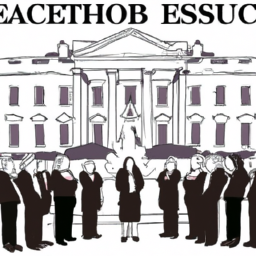Executive orders have long been a part of the United States government's decision-making process. These orders, issued by the President, hold significant power and can shape policy, regulations, and even the country's direction. In this article, we will delve into the concept of executive orders, their authority, and the impact they have on governance.
An executive order is a directive issued by the President of the United States that manages operations of the federal government. It is a unilateral decision made by the President, bypassing the need for Congress to pass legislation. While executive orders are not explicitly mentioned in the Constitution, they derive their authority from Article II, which grants the President the "executive power."
The power of executive orders lies in their ability to influence and shape policy. They can range from broad policy directives to more specific regulations, depending on the President's agenda. Executive orders have been used to address various issues, including civil rights, national security, economic opportunities, and even emerging technologies like artificial intelligence.
One example of a significant executive order is the White House Executive Order on Artificial Intelligence: AI Bill of Rights. This order provides a roadmap for the use of AI across the federal government, highlighting the importance of responsible and ethical AI practices.
Executive orders can also be controversial, as they bypass the legislative process and concentrate power in the hands of one individual. Critics argue that executive orders can be used to circumvent Congress and undermine the democratic process. However, supporters contend that executive orders are necessary for effective governance, especially in times of crisis or when prompt action is required.
The implementation and enforcement of executive orders are essential aspects to consider. While the President has the authority to issue executive orders, their implementation often relies on the cooperation of various government agencies and departments. The extent to which an executive order is carried out can vary, depending on the administration's commitment and the support it receives.
In recent years, executive orders have been used to address issues such as gun laws, national security, and economic opportunities. For example, Florida Governor Ron DeSantis utilized an executive order to provide religious schools the same funding available to other private schools. This decision had a significant impact on educational funding in the state.
Ultimately, executive orders are a tool that allows the President to exercise their authority and shape policy without the need for congressional approval. While they can be challenged in court or overturned by subsequent Presidents, executive orders have the potential to influence the course of governance and impact the lives of citizens.
In conclusion, executive orders play a crucial role in the United States government's decision-making process. They provide the President with a powerful tool to shape policy and regulations. However, the use of executive orders also raises questions about the balance of power and the democratic process. Understanding the authority and impact of executive orders helps us navigate the complex landscape of governance and decision-making in the United States.
